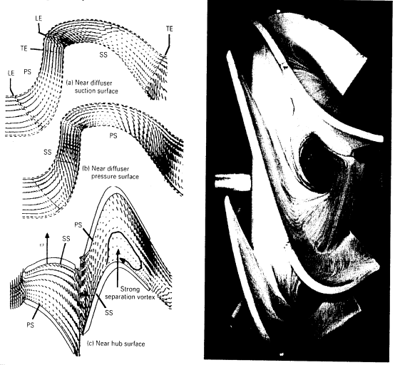Turbomachinery flow is dominated by complicated three-dimensional viscous effect. Recent developments in experimental and computational techniques have provided a better understanding of the three-dimensional flow fields in many types of turbomachinery.
One difficulty currently facing turbomachinery designers is how to utilize these important insights to optimize the blade geometry. Current design practice makes incremental changes to existing geometries and then evaluates the flow field with analysis methods. It is then difficult for a designer to use his fluid dynamics insights directly in the shape optimization process, as the design input is the blade shape. Inverse design methods, in which an important flow variable (such as surface pressure or blade loading) is prescribed, allow designers to make direct use of their physical insights to affect their choice of design.
Many two-dimensional (2D) inverse design methods are available, which are commonly used for the early stages of the design of axial turbomachines. These methods have already had some impact in industrial design, for example in controlled diffusion blading for compressors. However, given the three-dimensional nature of the flow in most turbomachines, these 2D methods have failed to change conventional design practice. This still relies on the iterative application of analysis methods and thereby encourages considerable empiricism.
In the following paper, a 3D inverse design method, in which the blade geometry is computed for a specified distribution of circulation distribution, will be described. Two examples will show how the design specification of the 3D inverse design method can be chosen systematically to design blades with optimized aerodynamic performance. In the first example, the application of the method to suppress meridional secondary flow in centrifugal compressor and pump impellers will be described. The second example will show the application of the method to design a vaned bowl pump diffuser.

Fig. 1. Predicted velocity vectors near the blade surfaces and hub of a conventional diffuser, and results of oil flow visualization for a conventional diffuser.
To discover the suppression of secondary flows in radial and mixed flow impellers or the application of the inverse design method to the design of diffusers, we invite you to download your free copy of the paper below.
Mehrdad Zangeneh
Mehrdad Zangeneh is Founder and Managing Director of Advanced Design Technology and professor of Thermofluids at University College London.
View All Articles






Share This Post